- Home
- Gail Godwin
Publishing Page 6
Publishing Read online
Page 6
“A Southern Family is all we hoped it would be,” Larry generously wrote to me after he and the others in the house had read the final manuscript. A seasoned publisher, he knew what it took to give a book a propitious send off. At the American Booksellers Association meeting in Washington, D.C. in the spring of 1987, he held a dinner at the Willard Hotel in my honor for the major book critics. He arranged for me to speak to booksellers at the ABA breakfast. A Southern Family was my first Book-of-the-Month Club main selection and would get my first front-page review in the New York Times Book Review. Larry retired before A Southern Family was published, in the fall of 1987, but all the important groundwork had been laid.
However, the new publishing ethos was firmly in place by 1990, when I turned in the second novel of the two-book contract with Morrow, and it made itself felt right from the start. The entire contractually allowed month of silence passed before John Hawkins received word that Morrow-Avon had accepted the manuscript of Father Melancholy’s Daughter. Soon afterward, Hawkins reported to me the behind-doors story, courtesy of Harvey Ginsberg. “There is no way I can earn back the advance on this book,” Carolyn Reidy, now president of Avon, had told the new Morrow president, Howard Kaminsky. Reidy advised the team to turn it down. She and Kaminsky were leaning toward rejection when Al Marciano, the company treasurer, asked if it was a matter of the book’s quality. Oh no, he was told, it might even be her best book, quality-wise, but in subject matter it wasn’t as saleable as A Southern Family. “Well, then,” Marciano said, “aren’t we obliged to honor our commitment?” In that instance the old-school team member prevailed and the acceptance check was issued.
The battle continued, however. Kaminsky phoned Hawkins to say: “Her title just doesn’t shout big book.” Also the team felt Father Melancholy’s Daughter had too many syllables. (“See if you can get her to change it.”) Embattled, I lay awake compiling an arsenal of multisyllabic titles of “big books” for John to pummel Kaminsky with: The Brothers Karamazov, Sense and Sensibility, The Prime of Miss Jean Brodie, Dinner at the Homesick Restaurant, The World According to Garp, A La Recherche du Temps Perdu.
Meanwhile, attacks had begun on another flank. Carolyn Reidy thought the novel was too long; it took too much time getting to the love interest, the meeting of Margaret and Adrian, halfway through. There was a new system in place at Morrow-Avon, John was informed, in which the hardcover editor and the paperback editor shared their editing suggestions with the author. My hardcover editor, Harvey Ginsberg, called to tell me Judith Riven, the paperback editor, would be sending me, separately, her suggestions for cuts. In a conspiratorial sotto voce he added: “But don’t do anything you don’t feel like doing.”
Father Melancholy’s Daughter kept its title, but I did end up cutting about ten thousand words at Judith’s suggestion. Do I regret it? Yes. Some good material was lost. But at the time I felt uncertain and kept second-guessing myself: do I really need this . . . and this? The cut version in book form came to 404 pages, 160 pages shorter than A Mother and Two Daughters, and 136 pages shorter than A Southern Family. Father Melancholy’s Daughter was a Book-of-the-Month Club main selection and a Franklin Library signed first edition, and it appeared in the number twelve spot on the Times bestseller list for one week. For my interview with the Today show’s Katie Couric, I was flown to Washington at the last minute because she had to be there to meet General Norman Schwarzkopf on his return from the Gulf War.
Because of the contract for A Southern Family and Father Melancholy’s Daughter, I was able to take two huge steps that enhanced my life and the lives of the two people closest to me. Robert and I built the Woodstock house, in which I still live, and we enjoyed it together for fourteen years. He called it, depending on his mood, the Factory, the Orphanage, or Villa Godstar. He wrote music on his last day in this house, a song called “Evening.” We moved into Villa Godstar on July 1, 1987, three months before A Southern Family was published.
Villa Godstar
Gail and Robert’s Woodstock house.
In early January 1987, I was able to buy a beautiful condo in Asheville for my mother when she decided to end a marriage of thirty-nine years and live alone for the first time in her life, at the age of seventy-five. She had gone straight from home to college to a brief marriage, followed by ten years of supporting her widowed mother and small child by writing and teaching, then into a second marriage and three more children: Franchelle Cole Millender, now an attorney; the late Tommy Cole, who will always be an enigma; and her youngest, Rebel Cole, now a professor of finance. She had never slept in a house by herself until she lay down in her new bed at 1902 Timber Trail, which looked out at the mountains. Here she lived among things she had chosen, preferring clean spaces to objects she didn’t want to look at; she ate what she liked (oatmeal, grapes, Lean Cuisine, and chocolate) and lost thirty pounds; she slept when she pleased, or not at all. After a lifetime of concealing her privacy behind an illegible script, she took a course in calligraphy, and set out to write a daily chronicle of her new life in spiral notebooks that anyone could read. Gifted at needlework, she sewed and embroidered silk cases for the notebooks. She mailed them to me as she wrote them—just as she used to let me read her stories and novels as they came out of the typewriter. “Would you consider letting me put these in my Wilson Library archives at Chapel Hill?” I asked. “I mean, after we are both dead, of course.” “Better not wait for both of us to be dead before you put them in,” she suggested with her old wicked smile.
Kathleen’s journals
“Would you consider letting me put these in my Wilson Library archives at Chapel Hill?”
Her journals reveal a woman disciplined in the skills of writing, living fully in the midst of her times, and determined to be accountable. She writes about becoming a Helpmate, on call for battered women—“If I managed to leave, at my age,” she told them at secret meeting spots, “you can do it, too.” She hammered home her point in domiciliary care meetings (“old people still have bodies”) until she got exercise programs started in nursing homes, and she taught an overflowing course in Asheville history at the local university. Reviewing her past life, she saw new angles of it, some humiliating, some fortunate, some devastating. Occasionally she would write, “This is all I can take now—will try to go on with it some other time.” Faithfully chronicling until the day before her death, she reported how worthy projects finally got accomplished in tiresome committee meetings and often what strangers said to her on the street. To a young man complaining that the library was closed, she gave the reminder that today was King’s birthday. “Oh!” he cried happily. “And here I didn’t even know it was Stephen King’s birthday!”
A Southern Family and Father Melancholy’s Daughter did not earn out the advance by a long shot, but before Father Melancholy was published in 1991, John had signed me for a two-book contract with Random House–Ballantine. Even before the auction between the Book-of-the-Month Club and the Literary Guild had taken place, and long before the starred reviews of Father Melancholy’s Daughter appeared in Publishers Weekly and Kirkus, John had approached Howard Kaminsky about a new contract for my next two novels. I don’t know what was said, because all I recorded in my journal at the time was that “Kaminsky really hurt John’s feelings” on Monday. By Thursday of the same week John had got opening bids from Bob Wyatt, who was now at Ballantine with Susan Petersen, and from Steve Rubin and Linda Grey at Doubleday-Bantam.
The two works named in the new contract up for bidding were My Last Protégé and The Very Rich Hours of Freddy Stratton. By the time of signing, I had written several chapters and an outline of the first novel and a plot summary of the second. (Though neither of these novels ever came into being, parts of them were to find their way into future novels.)
That 1990 auction, won by Susan Petersen and Bob Wyatt at Ballantine, would mark the peak of my desirability status in the publishing industry. Never again would publishers bid so much and so wildly for the honor of
having me on their list. “This is getting crazy, don’t you think?” I said to Hawkins during the auction. “No,” he said, “both houses want you because you’d be the literary plum on their list, and because A Mother and Two Daughters has sold over a million copies and goes on selling, and they also want you to keep their competitors from getting you.”
I was visiting Asheville when the bidding reached its culmination. It had been going on all morning when Susan Petersen phoned me herself to say, “Please come with us. I feel like I’m asking you to marry me.” Though her recklessness charmed me, I explained I had to get off the phone now, because I was already late to pick up a nun I was taking on a picnic. “Oh, God,” she cried, “that is right out of one of your novels.” I think that is what did it for me: A Southern Family had ended with a picnic on the mountain with a nun.
I drove across town to the convent, having promised John Hawkins to phone him collect before going out of reach on the picnic. And in a tiny parlor I made the call to New York from an old-model telephone I recognized from the “telephone closet” of the now-torn-down Victorian structure where I had gone to school in the forties and fifties. Then away I went on the picnic with Sister Winters, with whom I had been close ever since she was my eighth-grade teacher. It was raining, so we sat under the eaves of a little church on top of a mountain. I remember saying something like “I can’t believe how much money they’re going to give me,” and I remember her saying she was glad, and then we ate our fried chicken thighs and celery sticks and hard-boiled eggs, and drank our bottle of red wine and talked of other things.
Auction Day, 1990
“It was raining, so we sat under the eaves of a little church on top of a mountain.”
When Hawkins was finalizing the 1990 Random House–Ballantine contract, he was still raw from Kaminsky and Reidy’s attempted jettisoning of Father Melancholy’s Daughter. He and Susan Petersen and Bob Wyatt drafted a new rider that would squash any such attempt in the future. Though the final version of this rider got modified, I photocopied that first draft and have kept it in my desk drawer. I like to check myself off against its lofty expectations.
In evaluating whether the complete manuscript is satisfactory, the Publisher may consider only (i) whether, in the opinion of the Publisher’s counsel, it violates the copyright, right or privacy or any other right of any person or contains libelous or obscene matter, and (ii) its conformity with the length requirements of Rider to Paragraph 1 hereof and with the professional and literary standards exemplified by A SOUTHERN FAMILY. “Professional and literary standards” include such factors as writing style, accuracy, originality, clarity, grammar, organization, realism, plot development, character development, credibility, intellectual and emotional appeal and geographic and temporal sweep.
Susan Petersen was still president of Ballantine when I abandoned the ninety pages of My Last Protégé, a novel told from the viewpoint of Augusta (Gus), an architect, who meets her high school protégé twenty years later at a mutual friend’s funeral. In high school Edmund was a withdrawn, fat boy with no social skills until Gus took him in hand and transformed him into a handsome and mysterious creature everybody wanted. Now he has returned to town, more attractive and mysterious than ever, with an older man and a shy, almost feral, young girl, and all three are going to live in Edmund’s old family house. And then, on page 90, as a plague of locusts descends on Gus and Edmund’s town, and Gus realizes she is in love with her old protégé, the novel simply died. This happens. It happened with The Angel Keeper, also on page 90. These deaths hurt. But dead is dead.
My Last Protégé was to have been about new beginnings and unexpected choices. The Good Husband, the novel that replaced it, was about dying and reviewing your old choices. In retrospect I see how in the early 1990s death had become my abiding interest. Robert had recently learned that he had multiple myeloma, a cancer of the bone marrow, and congestive heart failure. One or the other was going to take him out. (“Each year I could do less and less,” he was to tell the nurse who was with him at his death.) Of all subjects, how a person prepared for death was the one closest to my heart.
I had written about a third of The Good Husband, which divides points of view among Magda Danvers, a dying academic who looks upon meeting death as her “final exam;” Francis Lake, her devoted, younger househusband; Hugo Henry, an irascible writer; and Alice, his young wife, unsteady from a history of mental illness and the recent loss of their child. I took a photo of the different colored chapter folders spread out on a hassock and mailed it to Susan to show her I was making progress.
Soon after, the gift of a beautiful white blanket arrived with a warm note from Susan, but the next thing I knew my phone was ringing. “Bad news,” said Hawkins, “Susan’s out.” I was left high and dry as my editor-to-be, Bob Wyatt, had left Ballantine some months before. Later John phoned with news of Susan’s successor at Ballantine: Linda Grey, who with Steve Rubin at Bantam had lost out on the two previous auctions for my books! I have given Linda her own chapter in this book, “The Wings of the Dove.” She was truly a casualty of the new publishing ethos.
In Evensong, the novel that eventually got written instead of The Very Rich Hours of Freddy Stratton, Augusta (Gus), the architect from My Last Protégé, who is now my new protagonist’s best friend, finally gets her story told. The mystery of the new Edmund is also revealed.
Further down the line, into another era of contracts, Freddy Stratton would shape-shift into Tildy Stratton of Unfinished Desires, the queen bee at her girls’ school. The Very Rich Hours was to have had this convent school as its background; its tragedy was to have been that, for Freddy, her high school beauty and popularity represented the peak of her life. It was all downhill afterward. The present time of The Very Rich Hours was Freddy’s fiftieth year, when she is dying. In Unfinished Desires, largely set during Tildy’s ninth-grade year, Tildy, far from a beauty but an inspired troublemaker, shares the stage with several other major characters and the time span begins with the founding of the school in 1908 and takes Tildy’s ninth-grade class into their fifties.
Sometimes plans that you think went up in smoke will materialize at a later date and fit perfectly into a new work.
The Good Husband, published in 1994, remains my favorite failure. I don’t mean an artistic failure—I can still leaf through its pages and get a jolt of artistic sustenance—but a public failure, a publishing failure. “The book sold only 30,000 copies,” I confided in shame to my journal, though in retrospect thirty thousand doesn’t seem all that bad.
The Good Husband disappointed many people on many counts: its reception disappointed Linda Grey, my publisher. Despite her sending me on two coast-to-coast book tours, the book came nowhere near to making “the list.” It infuriated or irritated reviewers in key places who claimed that I had “attempted too much” or that “the characters were unlovable.” (“I just wanted to smack Alice down,” a TV hostess in Denver crowed exultantly to me on her show.) Devotees of Father Melancholy’s Daughter had been hoping for another character like Margaret, the dedicated daughter on the path to her own ministry. They had wanted to be Margaret. I received letters from women who said they were seeking ordination because of Margaret’s story. Whereas there was not one among the four protagonists in The Good Husband that a reader would gladly “identify with.” The most colorful and gifted one, the teacher Magda, is dying of cancer. The three others are bogged down in personal failures and losses. Yet the sheer life of all of them as they go about figuring out how to right themselves continues to amaze me. Though they started off as parts of me or of people I thought I knew, they add up to more than the sum of us. Even though I wrote it, it is one of those novels from which I continue to glean wisdom, as when Magda, in a dying dream, stands in front of her students with her guts falling out and tells them the reason she can see straight through people now is because she doesn’t want anything from them anymore.
The final book of the Ballantine contract made
with Susan Petersen, the novel that got written instead of The Very Rich Hours of Freddy Stratton, turned out to be an unplanned sequel to Father Melancholy’s Daughter. Evensong was the story of Margaret’s ministry and her marriage, set in the last year of the twentieth century. There was a five-year gap between The Good Husband (1994) and Evensong (1999), and John Hawkins had to ask Linda Grey to extend the contract deadline for Work Number 2.
Evensong was a critical success and made a one-week appearance (number 12) on the Times list. It is still taught in seminaries and is a favorite on Lenten reading lists. After its publication, General Theological Seminary awarded me an honorary doctorate of divinity. The original painting of a nighttime village in the mountains that Linda Grey commissioned for the book jacket hangs in a cherished place in my study. The novel, my tenth, did not come anywhere close to earning out its advance.
So I was flabbergasted when in 2002 Random House–Ballantine made an enthusiastic offer for a short (114 pages) fictional memoir, Evenings at Five, which included twenty drawings. “Why?” I asked John Hawkins. “When my bottom line at Ballantine has been in parentheses for years.”
John explained that (a) they wanted to keep their option on the next big fiction contract, and (b) Nancy Miller, Ballantine’s new editor in chief, was excited about it. When John was offering it around, Nancy had called and said, “John, I want this. What are the rules?” “The rule is love,” John told her. Nancy would have jumped in her car and driven up to Woodstock immediately and told me in person of her love had it not been for an event at her youngest son’s school.

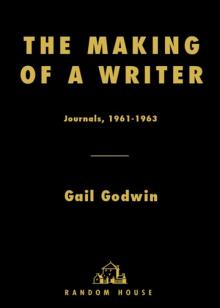 The Making of a Writer
The Making of a Writer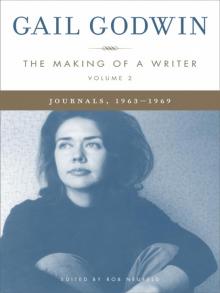 The Making of a Writer, Volume 2
The Making of a Writer, Volume 2 Old Lovegood Girls
Old Lovegood Girls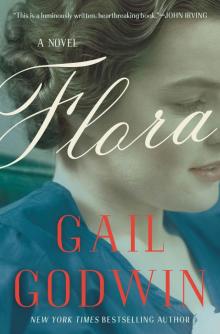 Flora
Flora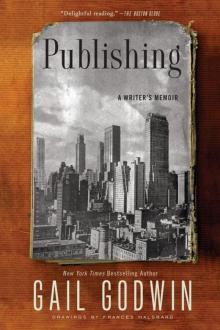 Publishing
Publishing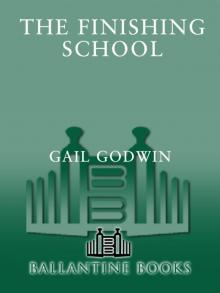 The Finishing School
The Finishing School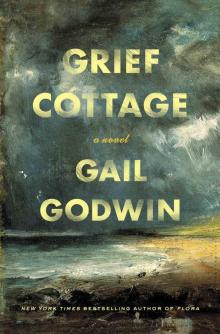 Grief Cottage
Grief Cottage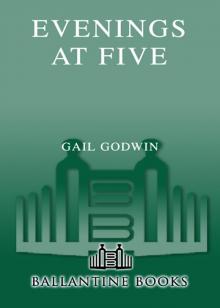 Evenings at Five
Evenings at Five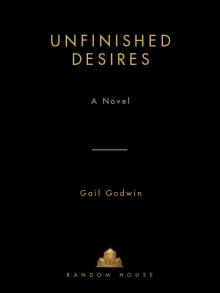 Unfinished Desires
Unfinished Desires